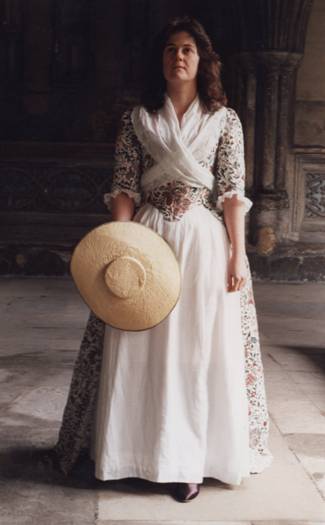
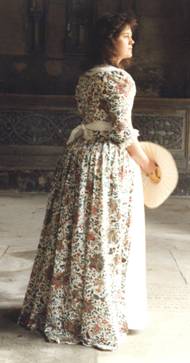
Polonaise Gowns 1780's
With the repeal of the English laws against the wearing and selling of cotton goods in 1774, imported cottons became fashionable for all levels of society. Hand painted or printed cottons from India and the Far East wereexpensive and this lead to the English cotton trade making cheaper versions of the imported goods.
This gown may have been described as a 'long Polonaise' since the skirt could be worn trailing on the ground or pulled up.
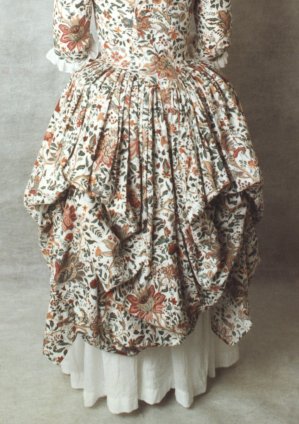 Short Polonaises were gowns that were intended always to be worn pulled up with short petticoats to reveal the ankles. Women had always pinned up their gowns to get them out of the dirt of the streets or when working, but in the 1770's this became a fashion feature.
Short Polonaises were gowns that were intended always to be worn pulled up with short petticoats to reveal the ankles. Women had always pinned up their gowns to get them out of the dirt of the streets or when working, but in the 1770's this became a fashion feature.
It is unclear where the fashion originated but it is thought that the term Polonaise indicates a Polish fashion. Poland was partitioned in the early 1770's and the puffed sections of the Polonaise skirt are thought to commemorate this.
There were several ways of achieving this style. Using tapes and ties inside the skirt as here, with loops and buttons on the outside or just simply gathering up the front edge of the skirt and pushing it into the pocket slits of the petticoat.
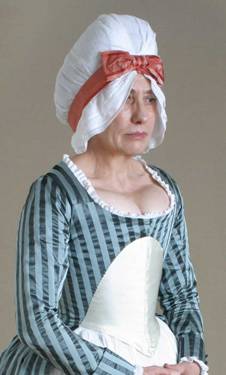
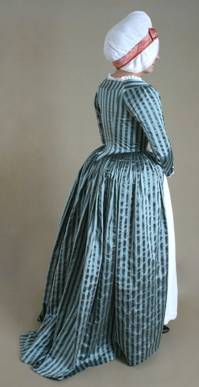 The Zone Gown was a variation of the Polonaise fashionable in the 1780's. The bodice was made to look like it had been cut away to reveal a waistcoat or underbodice. During this decade female fashion often reflected male styles with long sleeves, collars, cuffs and buttons used as a decorative feature.
The Zone Gown was a variation of the Polonaise fashionable in the 1780's. The bodice was made to look like it had been cut away to reveal a waistcoat or underbodice. During this decade female fashion often reflected male styles with long sleeves, collars, cuffs and buttons used as a decorative feature.
This 'zone' could be a separate piece but was usually part of the bodice. My gown has a zone of white satin, and fastens down the centre front with pins - the most common form of gown fastening in the 18th century.
The wearing of zone gowns or wide sashes at the waist helped to prepare the eye to accept the new high waisted fashions that started to be worn about 1794.
